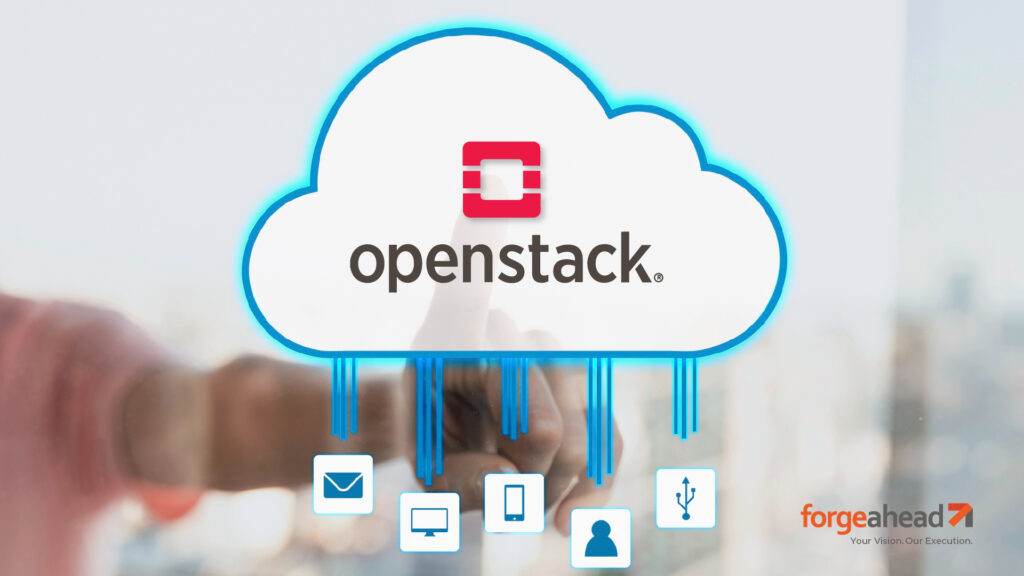Last updated on July 4th, 2024
94% of businesses are already using cloud computing to boost their IT infrastructure.
The cloud has completely changed the game, offering unmatched scalability, flexibility, and cost-efficiency. But keeping up with the fast-paced world of cloud tech and finding the best strategies for integration can be a bit overwhelming.
In this blog, we’ll explore the latest cloud computing technologies, including serverless computing, edge computing, and multi-cloud strategies. It will provide you with the insights needed to navigate the evolving cloud landscape and make informed decisions for your organization.
Cloud computing continues to evolve, driven by innovations in AI, machine learning, and big data analytics. It remains integral to digital transformation strategies, providing the agility and scalability necessary for businesses to thrive in a dynamic environment.
Key Benefits of Cloud Computing
- Scalability: Easily scale resources up or down based on demand, ensuring optimal performance and cost-efficiency.
- Flexibility: Access a wide range of services and solutions to meet diverse business needs without significant upfront investment.
- Cost-Efficiency: Reduce operational costs with pay-as-you-go pricing models and eliminate the need for maintaining physical infrastructure.
- Disaster Recovery: Implement robust disaster recovery solutions with minimal effort and cost.
- Collaboration: Enhance collaboration with cloud-based tools that allow real-time access to data and applications from anywhere.
- Security: Benefit from advanced security measures and compliance certifications provided by cloud service providers.
- Innovation: Accelerate innovation by leveraging cutting-edge technologies like AI, machine learning, and big data analytics.
- Environmental Sustainability: Reduce carbon footprint by utilizing energy-efficient data centers and resources.
2024 Cloud Computing Technologies
Serverless Computing
Serverless computing is a cloud computing model where the cloud provider automatically manages the infrastructure required to run applications. In serverless architecture, developers focus solely on writing code, while the cloud provider handles server provisioning, scaling, and maintenance.
This model allows for more efficient resource utilization and cost savings, as users only pay for the compute time consumed by their applications.
Benefits of Serverless Computing:
- Cost Efficiency: Pay only for the actual execution time of your code, rather than provisioning and paying for idle server capacity.
- Scalability: Automatically scale up or down based on demand without manual intervention.
- Reduced Operational Complexity: Offload infrastructure management tasks to the cloud provider, allowing developers to focus on coding and innovation.
Edge Computing
Edge computing brings computation and data storage closer to the location where it is needed, improving response times and saving bandwidth.
This model processes data near the edge of the network, such as on local servers or IoT devices, rather than in a centralized data center.
Role of Edge Computing:
- Reduced Latency: By processing data closer to its source, edge computing significantly reduces latency, enhancing real-time data processing capabilities.
- Improved Performance: Local data processing decreases the load on central servers, resulting in better performance for critical applications.
- Enhanced Data Privacy: Sensitive data can be processed locally, reducing the risk associated with transmitting data to a central location.
Multi-Cloud Strategies
A multi-cloud strategy involves using multiple cloud service providers to distribute computing resources and applications. This approach helps organizations avoid vendor lock-in, enhance resilience, and leverage the best services from different providers.
Advantages of Multi-Cloud Strategies:
- Vendor Flexibility: Avoid dependency on a single cloud provider, allowing for greater negotiation power and flexibility.
- Improved Resilience: Distributing workloads across multiple clouds reduces the risk of downtime and service disruptions.
- Optimized Performance: Select the best-performing services from different providers to meet specific application requirements.
AI and Machine Learning Integration
Cloud providers are increasingly integrating AI and machine learning (ML) services into their platforms to help businesses enhance their operations, automate processes, and gain deeper insights from their data.
Services such as AWS SageMaker, Google Cloud AI, and Azure Machine Learning offer tools for building, training, and deploying ML models at scale.
How AI and ML Enhance Cloud Computing Technology:
- Enhanced Business Intelligence: Use ML algorithms to analyze data, identify trends, and make data-driven decisions.
- Automation: Implement AI-powered automation to streamline repetitive tasks, reducing operational costs and improving efficiency.
- Personalization: Utilize AI to deliver personalized experiences to customers, improving engagement and satisfaction.
Cloud-Native Development
Cloud-native development refers to building and deploying applications specifically designed to run in cloud environments. This approach leverages microservices architecture, containerization, and continuous integration/continuous deployment (CI/CD) practices to create scalable, resilient, and flexible applications.
Importance of Cloud-Native Applications:
- Scalability: Cloud-native applications can scale effortlessly to handle varying loads, ensuring optimal performance.
- Resilience: Microservices architecture allows for fault isolation, ensuring that failures in one service do not impact the entire application.
- Flexibility: Containerization enables consistent deployment across different environments, improving portability and reducing deployment times.
Strategic Considerations for Cloud Adoption
Adopting cloud computing technologies requires a well-thought-out strategy to maximize benefits and minimize risks. Here are key considerations for effective cloud adoption:
Technology Selection
Criteria for Choosing the Right Cloud Technologies and Providers:
- Business Needs Alignment: Select technologies that align with your business goals and operational requirements. Evaluate how each cloud service can support your core activities and strategic initiatives.
- Scalability: Ensure the cloud provider offers scalable solutions that can grow with your business. Consider the provider’s ability to handle increased workloads and data volumes.
- Reliability and Performance: Assess the reliability and performance guarantees of the cloud provider. Look for services with high availability, minimal downtime, and robust performance metrics.
- Support and SLA: Review the support options and service level agreements (SLA) offered by the cloud provider. Ensure they provide adequate support and clear SLAs for uptime and issue resolution.
- Cost Efficiency: Compare pricing models and select services that offer cost-effective solutions without compromising on performance and reliability.
Cost Management
Best Practices for Managing and Optimizing Cloud Costs:
- Cost Estimation and Budgeting: Use cloud pricing calculators and budgeting tools to estimate costs and set a realistic budget. Continuously monitor spending to avoid unexpected expenses.
- Resource Optimization: Implement resource tagging and monitoring to identify and eliminate unused or underutilized resources. Use auto-scaling features to adjust resources based on demand, ensuring you only pay for what you use.
- Reserved Instances and Savings Plans: Consider purchasing reserved instances or savings plans for predictable workloads to benefit from significant cost savings compared to on-demand pricing.
- Cost Monitoring Tools: Leverage tools like AWS Cost Explorer, Azure Cost Management, or Google Cloud’s Cost Management to track and manage cloud expenses. Set up alerts for spending thresholds to keep costs in check.
Security and Compliance
Ensuring Robust Security Measures and Compliance:
- Data Encryption: Implement encryption for data at rest and in transit to protect sensitive information from unauthorized access. Use managed encryption services provided by the cloud provider.
- Access Control and Identity Management: Set up strong identity and access management (IAM) policies to control who can access your cloud resources. Use multi-factor authentication (MFA) and least privilege principles.
- Compliance Certifications: Ensure the cloud provider complies with relevant industry standards and regulations such as GDPR, HIPAA, and PCI-DSS. Regularly audit and review compliance status.
- Security Monitoring and Incident Response: Implement continuous security monitoring and have a robust incident response plan in place. Use tools like AWS GuardDuty, Azure Security Center, or Google Cloud Security Command Center.
Hybrid Cloud Strategies
Balancing On-Premises Infrastructure with Public and Private Cloud Solutions:
- Hybrid Cloud Architecture: Design a hybrid cloud architecture that integrates on-premises infrastructure with public and private cloud environments. Use tools like AWS Outposts, Azure Arc, or Google Anthos for seamless integration.
- Workload Distribution: Identify and categorize workloads to determine which should run on-premises, in private clouds, or public clouds. Consider factors like latency, security, and compliance requirements.
- Data Management: Implement a consistent data management strategy across hybrid environments. Use data synchronization and migration tools to ensure data integrity and accessibility.
- Unified Management Tools: Use unified management tools to monitor and manage resources across on-premises and cloud environments. Ensure visibility and control over all parts of the hybrid cloud setup.
Implementation Best Practices
Implementing cloud solutions effectively requires meticulous planning and strategic execution. Here are some best practices to ensure a smooth and successful transition:
Planning and Roadmapping
Developing a Clear Cloud Adoption Roadmap:
- Assess Current Infrastructure: Begin by evaluating your existing IT infrastructure to identify components that can be migrated to the cloud.
- Set Objectives: Define clear, measurable goals for your cloud adoption, such as cost savings, improved scalability, or enhanced performance.
- Create a Timeline: Develop a realistic timeline with milestones and checkpoints to track progress and address any issues promptly.
- Engage Stakeholders: Involve key stakeholders in the planning process to ensure alignment and support for the cloud adoption strategy.
Managing Organizational Change and Ensuring Stakeholder Alignment
- Communicate the Vision: Clearly articulate the benefits of cloud adoption to all stakeholders, including employees, management, and clients.
- Training and Support: Provide comprehensive training for staff to equip them with the necessary skills to work with new cloud technologies.
- Incremental Implementation: Consider a phased approach to cloud adoption to minimize disruption and allow time for adjustment.
Seamless Integration of Cloud Solutions with Existing Systems and Workflows:
- Assess Compatibility: Ensure that new cloud solutions are compatible with existing systems and workflows to avoid disruptions.
- Use Integration Tools: Leverage integration tools and middleware to connect disparate systems and facilitate data flow between on-premises and cloud environments.
- Test and Validate: Conduct thorough testing and validation of integrated systems to ensure seamless operation before full-scale deployment.
Tools and Techniques for Monitoring and Optimizing Cloud Performance:
- Implement Monitoring Tools: Utilize cloud-native monitoring tools such as AWS CloudWatch, Azure Monitor, or Google Cloud Operations to track performance metrics.
- Set Performance Benchmarks: Establish performance benchmarks to measure the effectiveness of your cloud environment and identify areas for improvement.
- Regular Audits: Conduct regular performance audits to detect and resolve issues promptly, ensuring optimal performance and resource utilization.
- Automate Alerts: Set up automated alerts for performance anomalies to enable quick response and mitigation of potential problems.
By following these best practices, businesses can ensure a successful cloud implementation, achieving their desired outcomes while maintaining operational continuity.
Future Trends in Cloud Computing
Cloud computing is constantly evolving, driven by technological advancements and changing business needs.
Here’s a look at expert predictions and upcoming innovations shaping the future trends of cloud computing:
End Thoughts
We’ve talked about the latest cloud computing technologies and strategies, exploring serverless computing, edge computing, multi-cloud approaches, AI and machine learning integration, and cloud-native development.
We’ve also discussed critical strategic considerations for cloud adoption, including technology selection, cost management, security and compliance, and hybrid cloud strategies. By following best practices for implementation and staying ahead of future trends, businesses can fully leverage the benefits of cloud computing.
Ready to develop and implement a robust cloud strategy? Contact Forgeahead for expert guidance and support. Let us help you navigate the complexities of cloud adoption and achieve your business goals.



